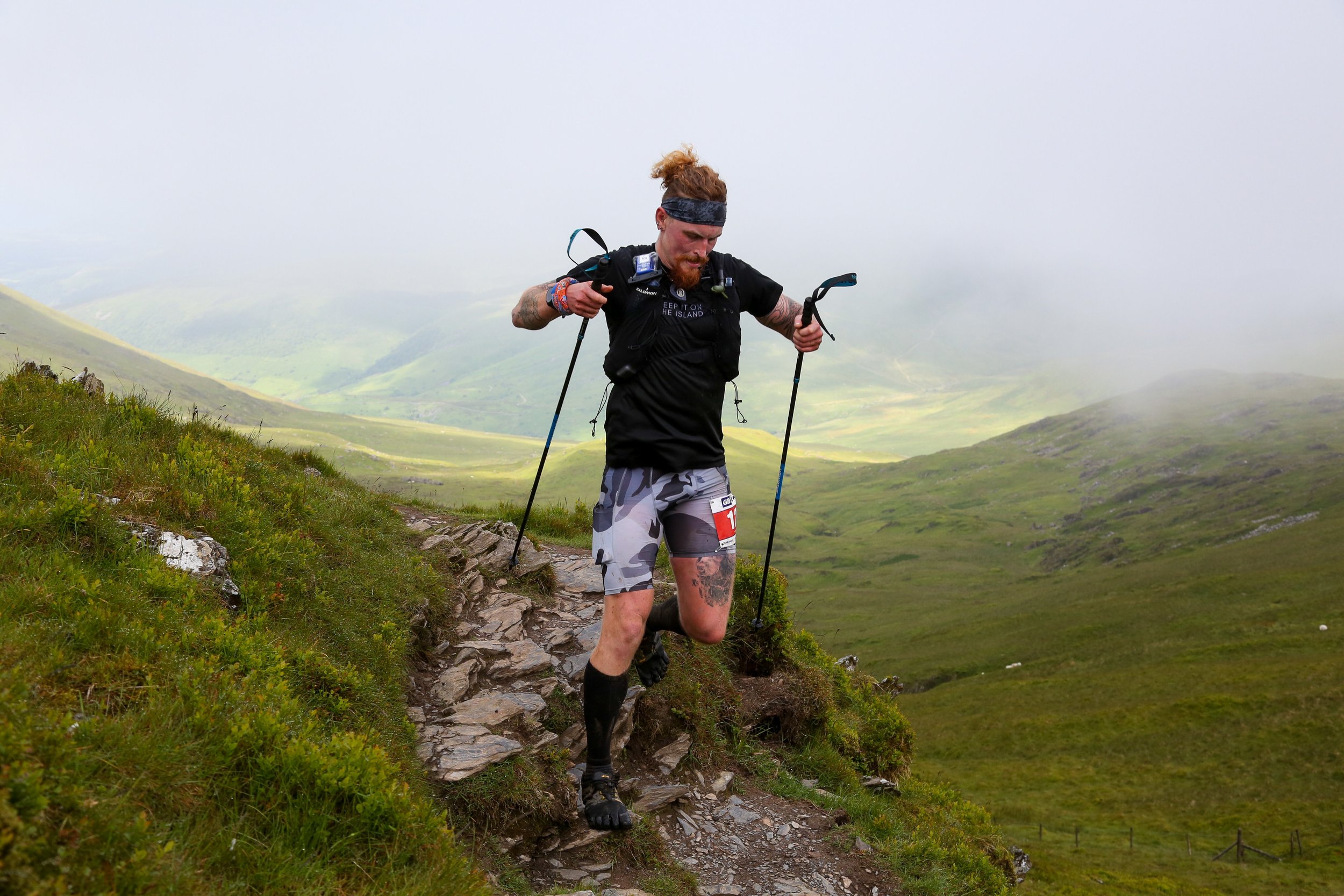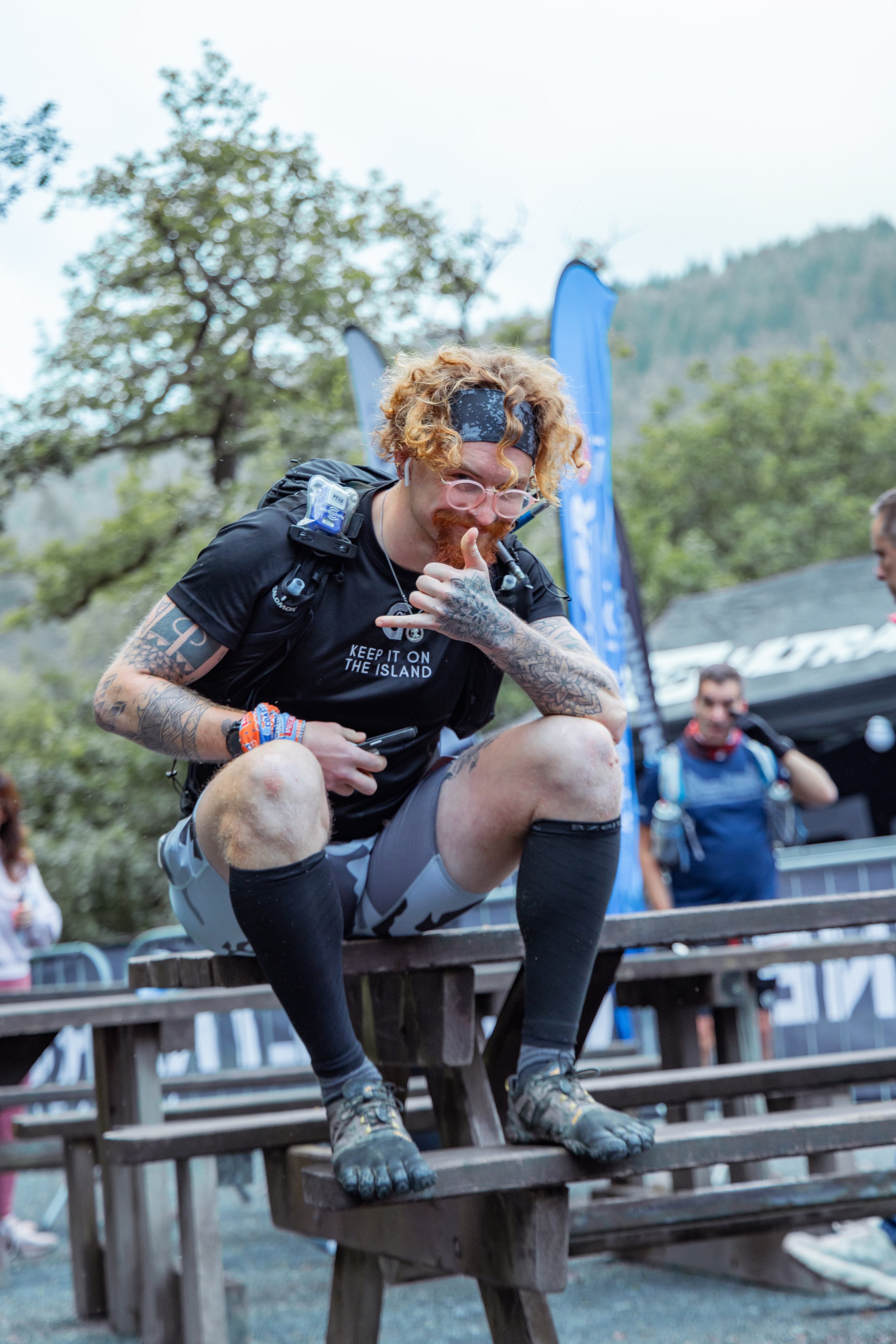Breaking Free | A Journey into Barefoot Running
The ever-present gaze of passersby—eyes fixed on the ground, staring at the crazy dude wearing strange flippers on his feet. Are they socks? Are they climbing shoes he forgot to take off after a bouldering session? Is this bloke all there upstairs…?
As a barefoot runner of nearly four years, this is my daily experience while walking through town to grab a duck wrap and a Kit Kat Chunky—and with good reason! I’m the first to admit that my choice of footwear is questionable at best, but there is a method to the madness.
And indeed, benefits that, for me at least, far outweigh the ever-present social humiliation.
In a running era dominated by continuously evolving shoe technology—where every new model promises to make us faster, stronger, and injury-free—barefoot running stands in stark contrast. It suggests that by reverting back to how we were “Born to Run,” we can actually become more resilient, quicker, and less injury-prone.
But is barefoot running truly the way forward, or just another fleeting fitness trend? Let’s have a gander…
Back to Our Roots
Prepare for an Attenborough-esque tale.
Since the dawn of time, running has been essential for survival—allowing early humans to hunt, evade predators, and explore new lands. Ancient civilizations, from the Tarahumara tribe of Mexico to the barefoot warriors of Kenya, have long relied on running as a mode of transportation and endurance, a tradition beautifully outlined in the book that first sparked my interest in barefoot running: Born to Run by Christopher McDougall.
Fast-forward to today, and running has shifted from a survival necessity to a global fitness hobby.
With this shift came the evolution of footwear, designed to enhance performance and protect runners from injury. Yet, as cushioned shoes became the norm, so too did the rise in chronic injuries—leading some to question whether modern footwear is doing more harm than good.
Of course, we have to take this with a pinch of salt, considering the Office for National Statistics (ONS) wasn’t exactly around 5,000 years ago to track running-related injuries.
In the 1960s and 70s, professional athletes began experimenting with minimalist shoes, drawing inspiration from the Tarahumara, who ran blisteringly fast without any shoes at all. Among the most famous was Bruce Tulloh, who won the 1962 European 5,000m Championships completely barefoot.
Since then, the quiet yet undeniable rise in minimalist footwear has given rise to brands like Vibram FiveFingers, Vivo, and others, offering barefoot lovers a variety of options.
But Why Put Yourself Through the Pain?
There’s no two ways about it—transitioning to barefoot running is relatively painful, at least for a while. So why go through the hassle?
Once fully adjusted, running, walking, and living in barefoot shoes can have a wealth of physiological benefits—all of which I can personally vouch for.
1. Reduced Risk of Injury
Going barefoot strengthens the musculoskeletal system, turning your joints and muscles—particularly in the lower body—into natural shock absorbers. This happens for two reasons:
• You naturally shift towards a mid/forefoot strike, reducing impact forces on the body.
• Your feet, ankles, knees, and hips adapt structurally, improving overall resilience.
2. Improved Proprioception
Proprioception is “the body’s ability to sense its position and movement in space, relying on sensory receptors in muscles, tendons, and joints.” In practice, this means:
• Your feet become more in tune with the terrain.
• You improve balance on uneven paths and trails.
• If you’re a fell or mountain runner, you’ll notice a significant boost in grip and stability on steep ascents and scrambles.
3. Better Posture
As your feet spread out and regain their natural shape, your body re-learns how to move as intended. You’ll walk more upright, naturally correcting poor posture.
Take it from someone who used to slouch around like the lad from The Hunchback of Notre Dame…
Beyond the Body
I’m not a particularly spiritual bloke—those who know me will attest to my cynical nature.
But the psychological effects of barefoot running are undeniable.
As a keen trail runner, I value my connection with nature. Running without music or distractions, simply absorbing the world around me along beautiful trails, is something I cherish.
Being able to feel the ground beneath me elevates that experience—it creates a unique connection with each run, making every outing feel different.
There’s also something special about reconnecting with our human roots—a thought that has crossed my mind many times while running through the great trails of Wales and Scotland.
It might sound a bit wanky, and it’s hard to put into words—but trust me, it feels pretty cool.
This Sounds Fab—But How Do I Start?
By now, you’ve obviously been convinced to give barefoot running a go. This is where you need to be careful…
Transitioning from modern running shoes to minimalist footwear too quickly is what puts most people off.
It’s like ripping the stabilizers off a bike before you’ve learned to balance—leading to shin splints, plantar fasciitis, and other nasties if you go all-in too fast.
The key? Take your time.
I tell my athletes to think of it like prescription meds—gradually increasing exposure over time.
A Simple Transition Plan:
1. Start with a wider toe-box shoe (e.g., Altras) for 2-3 months, allowing your toes to spread naturally.
2. Introduce one run per week in minimalist shoes, then slowly increase barefoot mileage over time.
3. Give yourself at least 6 months to fully transition.
Your knees, ankles, and shins will take a hit at first—but if you’re patient, barefoot running may prove as revolutionary for you as it has for me.
The Final Word
Barefoot running is neither a miracle cure nor a guaranteed path to injury-free running. Instead, it is a tool that, when used correctly, can help runners strengthen their feet, improve their form, and develop a deeper connection with their movement.
As noted previously, the best approach is gradual integration—starting with short barefoot walks, running on soft surfaces, and listening to the body’s signals. Whether fully embracing the barefoot lifestyle or simply incorporating elements of it into training, everyone (not just runners, even!) can benefit from reconnecting with the natural way of moving.
In the end, the decision to run barefoot or in shoes is deeply personal. What matters most is finding a method that keeps you moving, injury-free, and enjoying your running…
…But if you can stomach looking like a bit of a twat with your toes out, then I doubt you’ll look back. Both your body and, what might be the turning point for some, your wallet will thank you!
If you want to explore the world of Barefoot running, and realise the benefits for yourself, then drop me a line at info@gripperpersonaltraining.com or on social media at @gpt.fitness. Go Well!
H
REFERENCES
*https://www.runnersworld.com/advanced/a20804469/a-brief-history-of-barefoot-running/
*https://my.clevelandclinic.org/health/articles/proprioception







